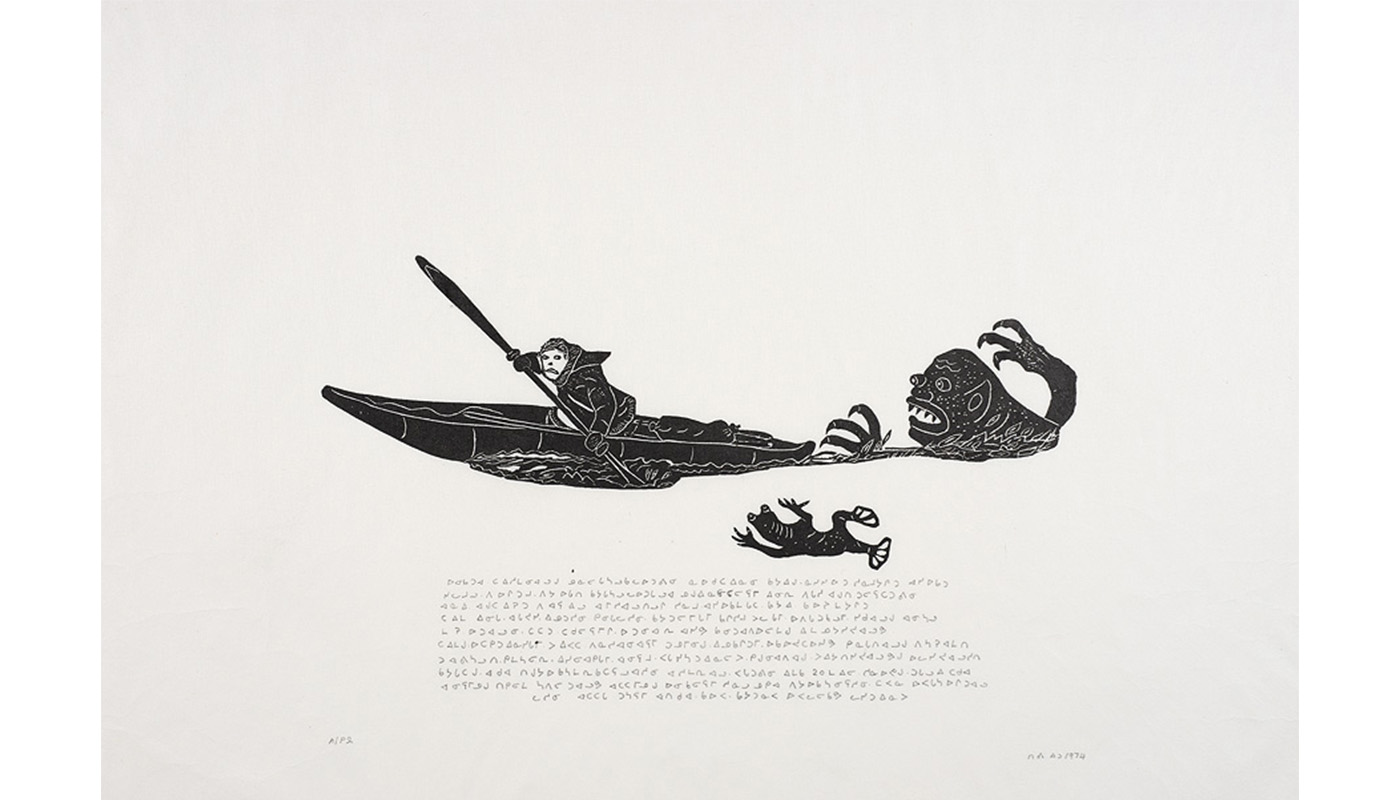
Art from Cape Dorset
Maggie Kurkoski is a member of the Smith College class of 2012 and the Brown Post-Baccalaureate Curatorial Fellow in the Cunningham Center.
This post is part of a series about the growth of the print, drawing and photograph collection at Smith College. Contemporary Inuit Art is on view in the Works on Paper gallery (2nd floor) until April 2015.
The Cape Dorset printing workshop emerged from an unusual seed: a pack of cigarettes. In 1957 a Canadian artist, James Houston, lived on Baffin Island in Cape Dorset, the Canadian Eastern Arctic. To the Inuit group that lives there, Baffin Island is Kingnit, and they are the Kingnimuit. The Kingnit men and those from other Inuit groups in the area have a long tradition of carving miniature sculpture, often with intricate designs etched into the surface. They used the materials at hand - stone, ivory, bone – culled from the environment around them to make art.
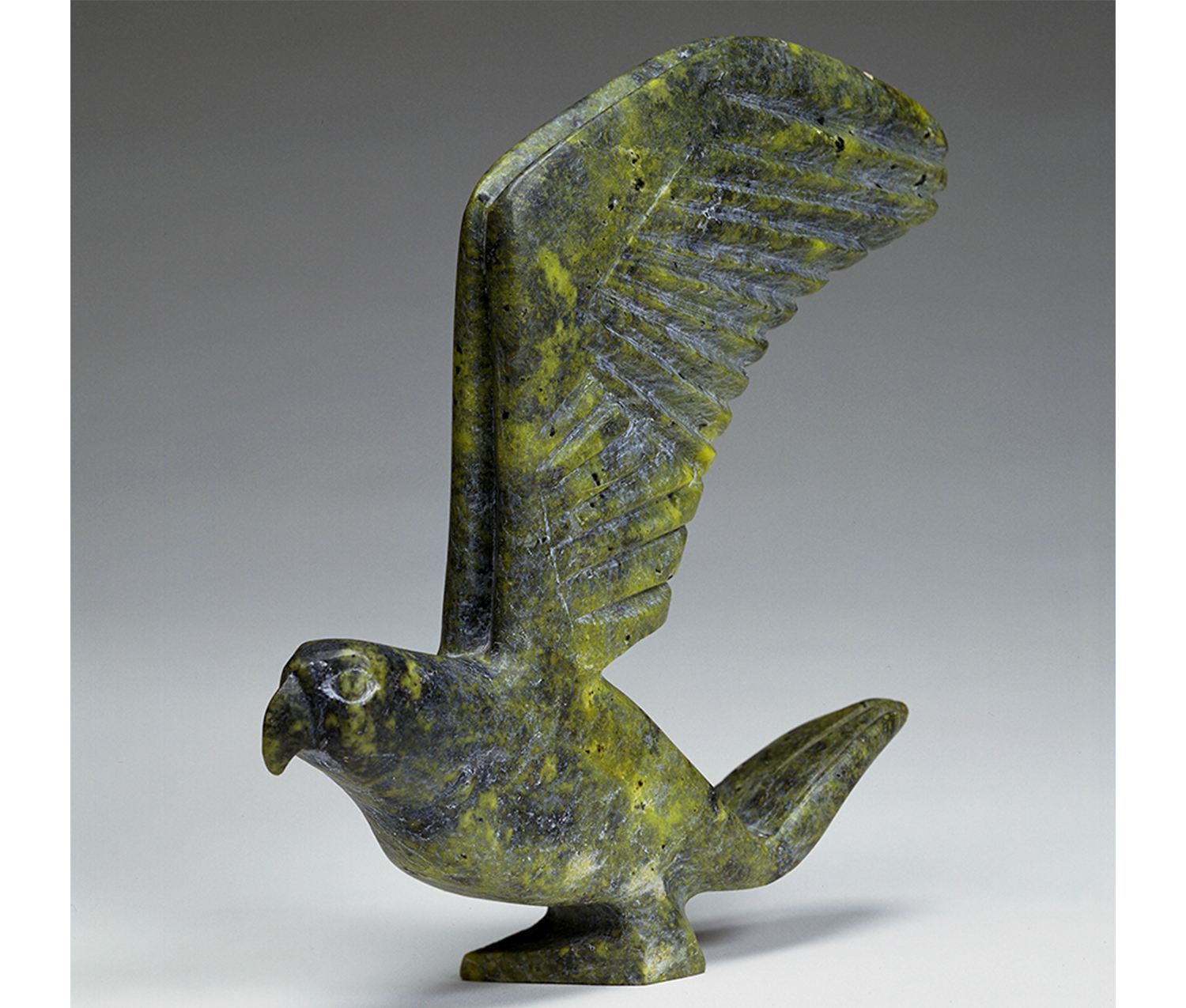
Oshaweetok (Osuitok Ipeelee). Inuit; Cape Dorset, 1923–2005. Kenojuak (Hawk), 1955. Green stone. Gift of Mr. and Mrs. James A. Houston (Alice Watson, class of 1959). Photography by Petegorsky/Gipe. SC 1988.52.7.
That year, Houston was spending time with his friend Oshaweetok, an artist famous around Cape Dorset for his sophisticated stone carvings, such as this Hawk carved from green stone (above).
Oshaweetok, also known as Osuitok Ipeelee, was examining the illustration on a pack of Player's cigarettes, an image of a sailor's head. As he studied each detail, he turned to Houston and said: "It must be very boring for someone to sit and paint each on like that."
Houston was surprised. As he put it, "I just assumed he knew [about the process of printing], but I don't know why."
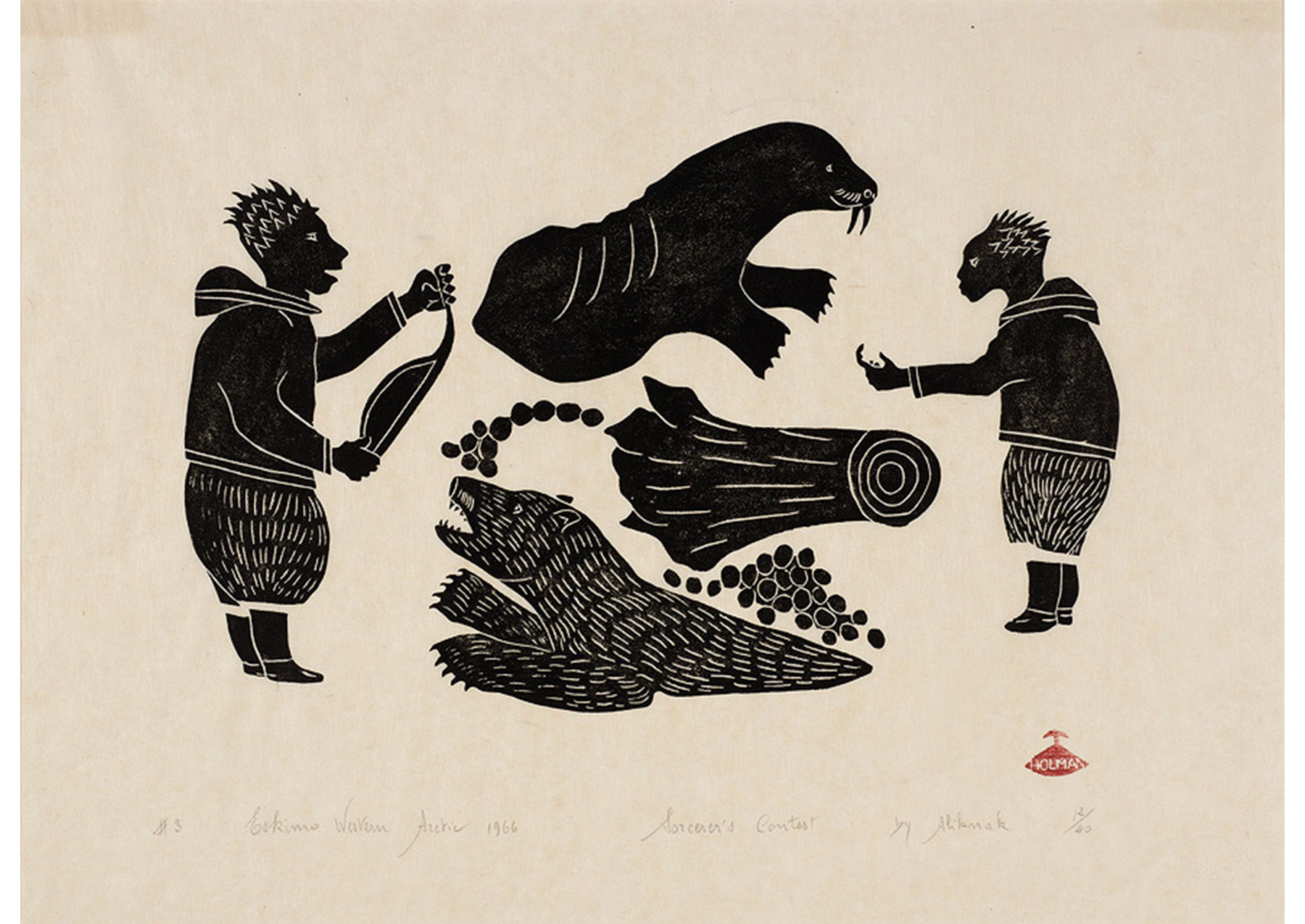
Aliknak (Alec Aliknak Banksland). Ulukhaktok, Northwest Territories, Canada, 1928–1998. Sorcerer's Contest, 1966. Stonecut printed in black on ivory paper. Gift of Mr. and Mrs. James A. Houston (Alice Watson, class of 1959). Photography by Petegorsky/Gipe. SC 1979.35.12.
Houston's language skills were not up to the task of explaining the art form, so he decided to show it instead. Oshaweetok had a small ivory carving nearby. Houston borrowed it, and then grabbed some ink and a few sheets of onionskin paper. He spread the ink over the pattern on the carving, and lay the toilet paper down on top. The ink transferred, and left the incised design on the paper. The germ of a prints workshop was planted that night, and grew into a thriving cooperative that is still in operation.
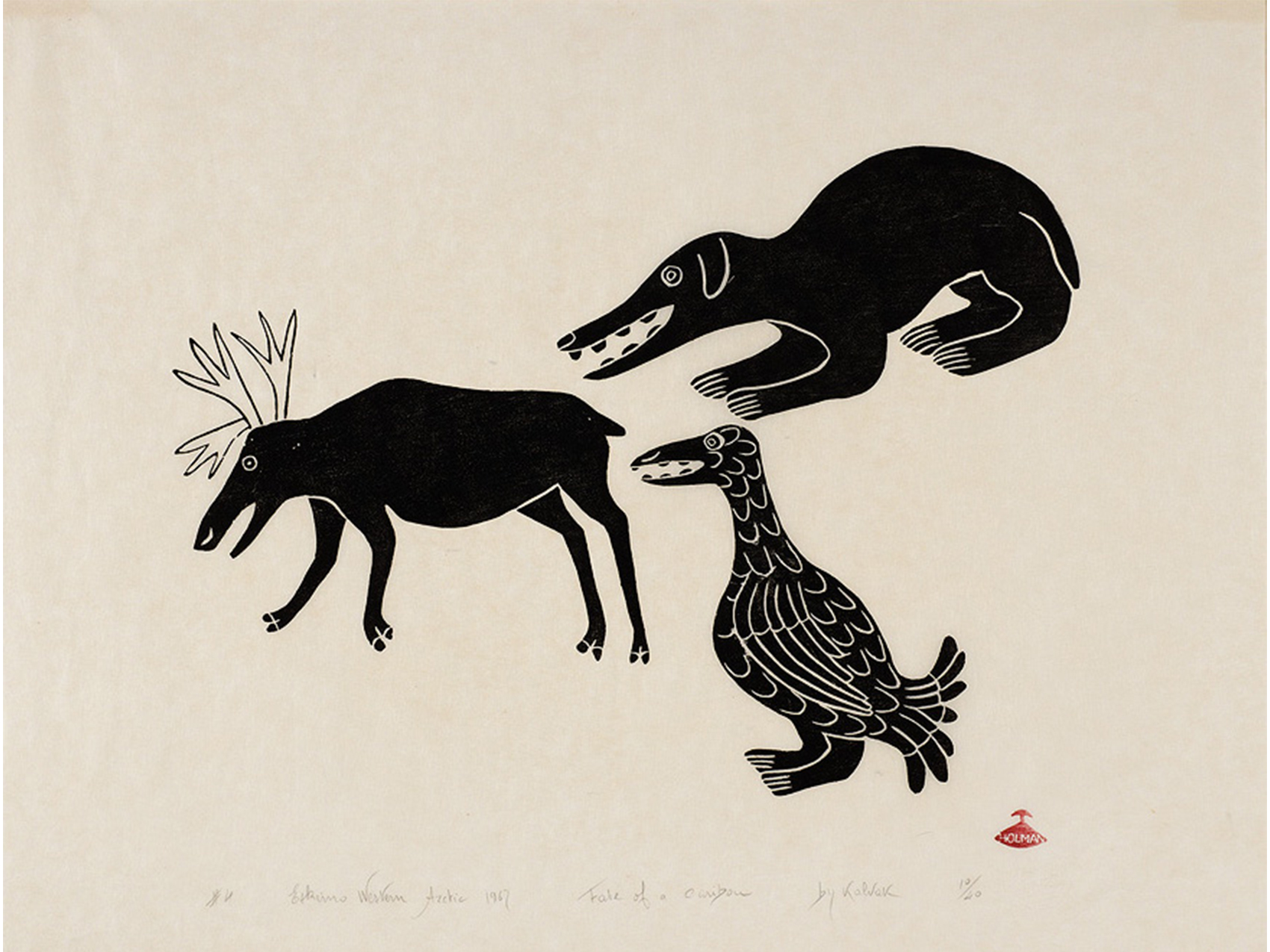
Helen Kalvak. Canadian; Inuit, 1901–1984. Fate of a Caribou, 1967. Stonecut on ivory paper. Gift of Mr. and Mrs. James A. Houston (Alice Watson, class of 1959). Photography by Petegorsky/Gipe. SC 1979.35.11.
The Cunningham Center has a great collection of Inuit drawings and prints, thanks to a close connection: James Houston married Alice Watson, a Smith College graduate of the class of 1959.
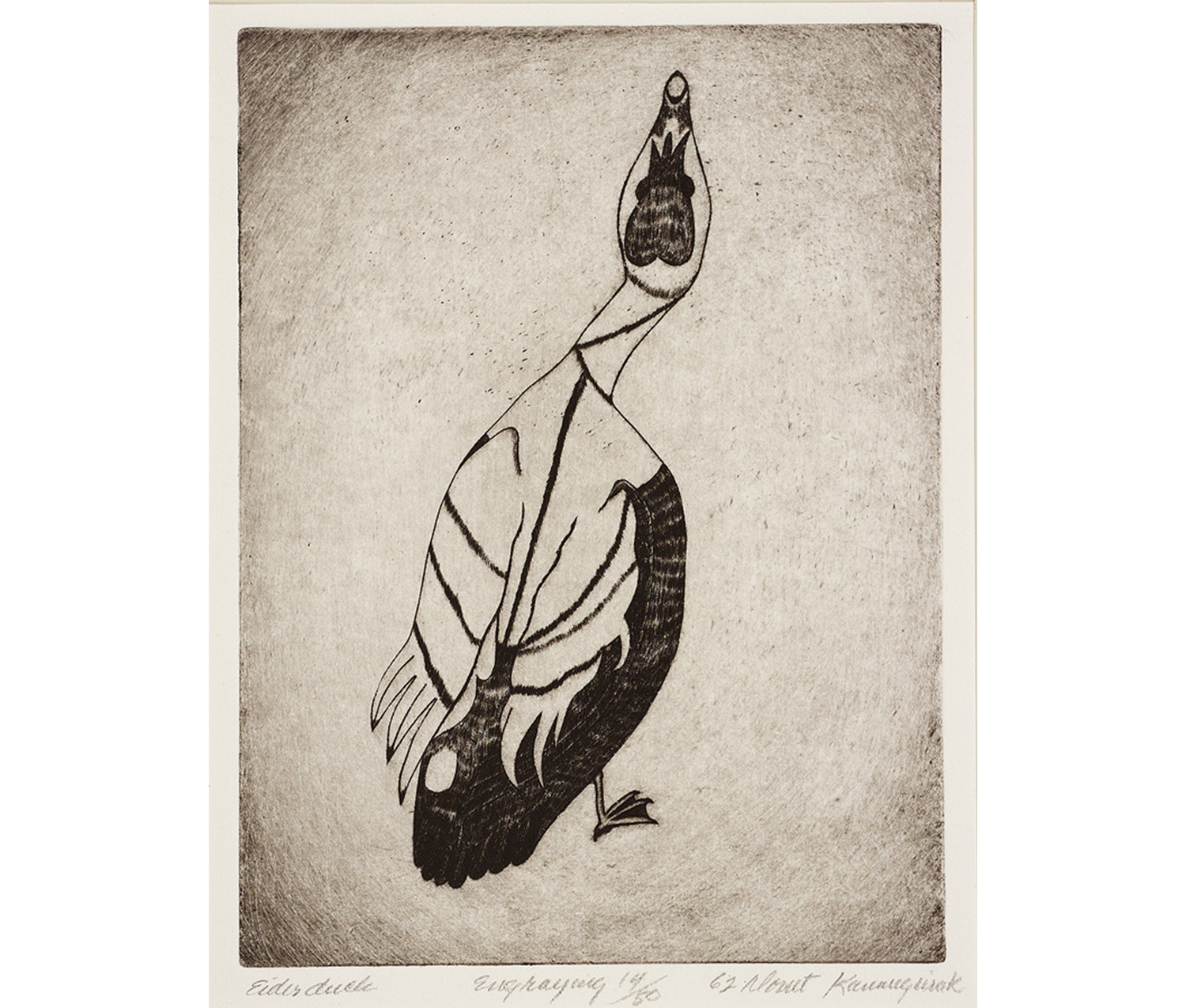
Kananginak Pootoogook. Canadian; Inuit, 1935–2010. Eider Duck, 1962. Engraving on ivory wove paper. Gift of Mr. and Mrs. James A. Houston (Alice Watson, class of 1959). Photography by Petegorsky/Gipe. SC 1979.35.9.